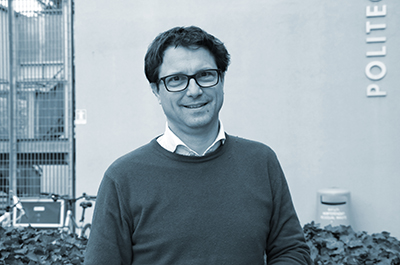
What is the WP2 of the LIS4.0 project about? Which are the challenges it must face?
WP2 of LIS4.0 has dealt with the design and production of sensorised extruders capable of impregnating the long carbon (or glass) fibres with a thermoplastic matrix in an optimised way and of depositing the impregnated fibres on the component being produced at optimal temperature and pressure to maximise adhesion and mechanical performance of the final piece. The design brought up many challenges: if the fibre isn’t correctly “wettened”, the performance of the ultimate manufactured piece will be worst than expected; if the printing head doesn’t apply the expected pressure or temperature, it will not properly stick to the underlying surface; if the extrusion speed isn’t in sync with the speed of the end-effector of the robotic arm, not only the components will not be shaped as desired but also the risk of having a wrinkled component will increase or fibres will break during the deposition process.
Which are the innovative solutions explored for composite material structures, both in terms of design and management of the product lifecycle?
To tackle the challenges mentioned above, it is necessary to implement an integrated approach: the extruder must take into account the material to be extruded as well as the manufactured product on which to deposit the fibre in order to optimize the speed profiles and the trajectory of the extruder itself. Therefore, the adopted approach was holistic, meaning that it took into account the starting material, the technological extrusion – pultrusion process, the mechanical structure of the extruder as well as its control, and the robotic arm used. Moreover, considering that the long fibre could also be made of glass, monitoring of the manufactured object can easily be implemented (for example, through a technology called Optical Backscatter Reflectometer – OBR). Thus, the final result is a 3D-printed carbon structure with an integrated distributed monitoring system capable of assessing mechanical and thermal stresses. This improves the safety and reliability of the component.
Which applications can be activated by sensor integration or the development of materials with self-healing features?
Monitoring critical (and even non-critical) components is currently of increasing interest since it allows to change the maintenance approach: from programmed to predictive. For mission-critical components, this perspective change is crucial. Nowadays, to maintain the required safety standards, it is mandatory to frequently carry out non-destructive inspections, which are money and time-consuming. On the contrary, by adopting an integrated monitoring system, it would be possible to foresee the component’s remaining life and intervene when necessary.
Which prototype developments were carried out in BAAM 3D moldless?
At the time being, simple samples were created, which enabled us to test the quality of the developed system and the implemented process. The desired outcome remains producing mechanical components for automotive applications.
